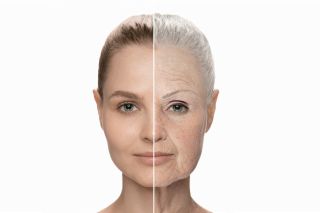Aging
What Is the Silver Tsunami and Who Is Geriatric?
"Geriatric” proves to be difficult to define.
Posted October 19, 2023 Reviewed by Ray Parker
Key points
- Rapid demographic change means more people with cognitive impairment are making important decisions.
- The "silver tsunami" is a demographic shift caused by the increasing population of older adults.
- Definitions of "geriatric" based on age alone are no longer accurate.
- Instead, functional age, which considers how a person functions daily, is a more helpful measure.

An unprecedented demographic shift is underway. By 2040, 80 million Americans will be over 65. The rapidly growing subgroup of elders age 85 and older (geriatricians and gerontologists call them "very old," "old-old," or the "oldest old") will have nearly quadrupled from 2000 to 2040.
Aging is the biggest risk factor for dementia. Moreover, the number of older adults living alone, without a spouse or other loved ones to care for them, is rising. How can our families and communities best support older adults experiencing cognitive impairment in making financial, medical, and other decisions?
What Is the "Silver Tsunami"?
A tsunami evokes an apocalyptic, destructive surge; the “silver tsunami” is caused by an increasing population of older adults. The term is often used to describe our population's ongoing seismic demographic shift.
With it comes another surge: Negative ideas about older adults held by younger generations. A primary concern about the silver tsunami is that older adults will overload human and social services and drive down our economy—fueling dehumanizing and discriminatory, ageist, and stereotypical views of older adults as vulnerable burdens to society.
"Geriatric"?
When exactly does someone become geriatric? I have discovered that the closer we all get to being "old," the later we think "old" starts. Until recently, geriatric was mainly used to refer to individuals 65 and older.
Public agencies use varying "senior" cutoffs of 65, 60, or 55 years of age. The Baby Boomer generation is reinventing the final stage of life, with many members in excellent health, remaining in the workforce well into their 70s and 80s.
Definitions of geriatric based on age alone no longer accurately describe today's population of older adults. Chronological age no longer captures the diversity and complexity of the older populations in the United States and abroad.
Aging is a complex process combining biological changes like increasing frailty, vision, and hearing loss, psychological factors like cognitive decline, and social aspects like retirement and support systems. Two individuals of the same chronological age can have vastly different physical and mental functioning levels, health conditions, and life circumstances. Genetics, lifestyle, and other factors influence natural aging.
By observing subgroups of older people, we now better understand how they age.
Accelerated aging is more common in survivors of childhood problems, including food shortages, physical abuse, and having parents with serious illnesses. Adults enduring discrimination and physical injuries also tend to age faster.
In such cases, geriatric features like ill health and cognitive decline can emerge in the 50s or younger rather than at 65. Stressful conditions in old age worsen accelerated aging, like social isolation, confinement, and limited health services. The COVID-19 pandemic contributed to the premature aging of many people worldwide.
By contrast, we see "superagers." These people in their 80s and beyond have mental functioning, including memory and judgment, comparable to middle-aged people. In addition to favorable genetics, "superagers" generally live an active lifestyle with plenty of physical activity, maintain a robust social network, are careful about their diets and drinking alcohol, and sustain friendships and personal habits that contribute to aging well.
We have several ways to portray a person's age: chronological age, biological age, psychological age, functional age, and social age. Functional age, which considers the whole person and how that person functions daily, is arguably the most helpful and practical measure. Living independently and ably is a prized aspect of aging well.
Stigma and Opportunity
Terms like "geriatric" and "elderly" conjure images of people who are feeble and dependent. A positive approach to aging shifts the focus beyond disorders and pathology. It examines the factors contributing to successful aging, including mental well-being, personal habits, sound reasoning, and wisdom.
The increasing number of seniors in our lives and communities is not a disaster. Aging can empower us to contribute wisdom and leadership for more innovative, balanced, and inclusive communities.
References
Cao X, Ma C, Zheng Z, He L, Hao M, Chen X, Crimmins EM, Gill TM, Levine ME, Liu Z. Contribution of life course circumstances to the acceleration of phenotypic and functional aging: A retrospective study. EClinicalMedicine. 2022 Jul 10;51:101548.
Cohen-Mansfield, Jiska & Shmotkin, Dov & Blumstein, Tzvia & Shorek, Aviva & Eyal, Nitza & Hazan, Haim. (2013). The Old, Old-Old, and the Oldest Old: Continuation or Distinct Categories? An Examination of the Relationship between Age and Changes in Health, Function, and Well-being. The International Journal of Aging and Human Development. 77. 37-57.
Jeste DV, Palmer BW, Rettew DC, Boardman S. Positive psychiatry: its time has come. The Journal of clinical psychiatry. 2015 Jun 24;76(6):14729.
National Council on Aging. Aging in America for Advocates: Get the Facts on Older Americans. Dec 12, 2022. Available at https://www.ncoa.org/article/get-the-facts-on-older-americans
Rogalski EJ, Gefen T, Shi J, Samimi M, Bigio E, Weintraub S, Geula C, Mesulam MM. Youthful memory capacity in old brains: anatomic and genetic clues from the Northwestern SuperAging Project. J Cogn Neurosci. 2013 Jan;25(1):29-36.




